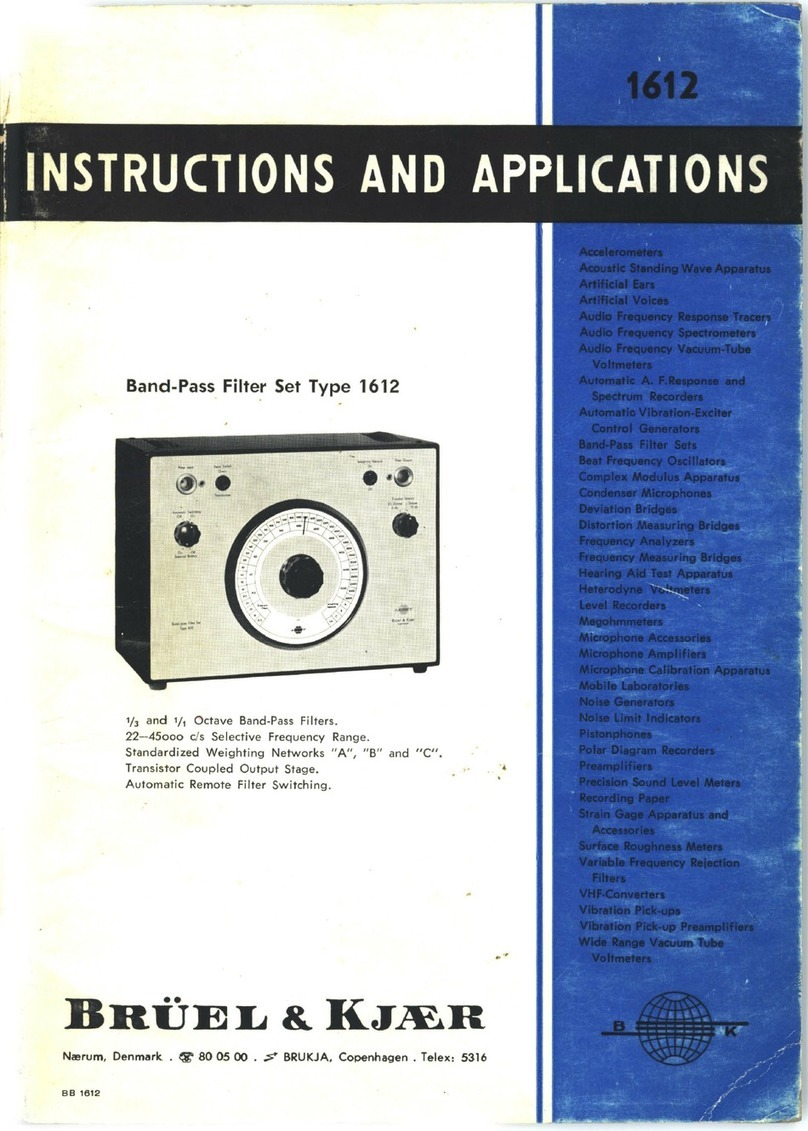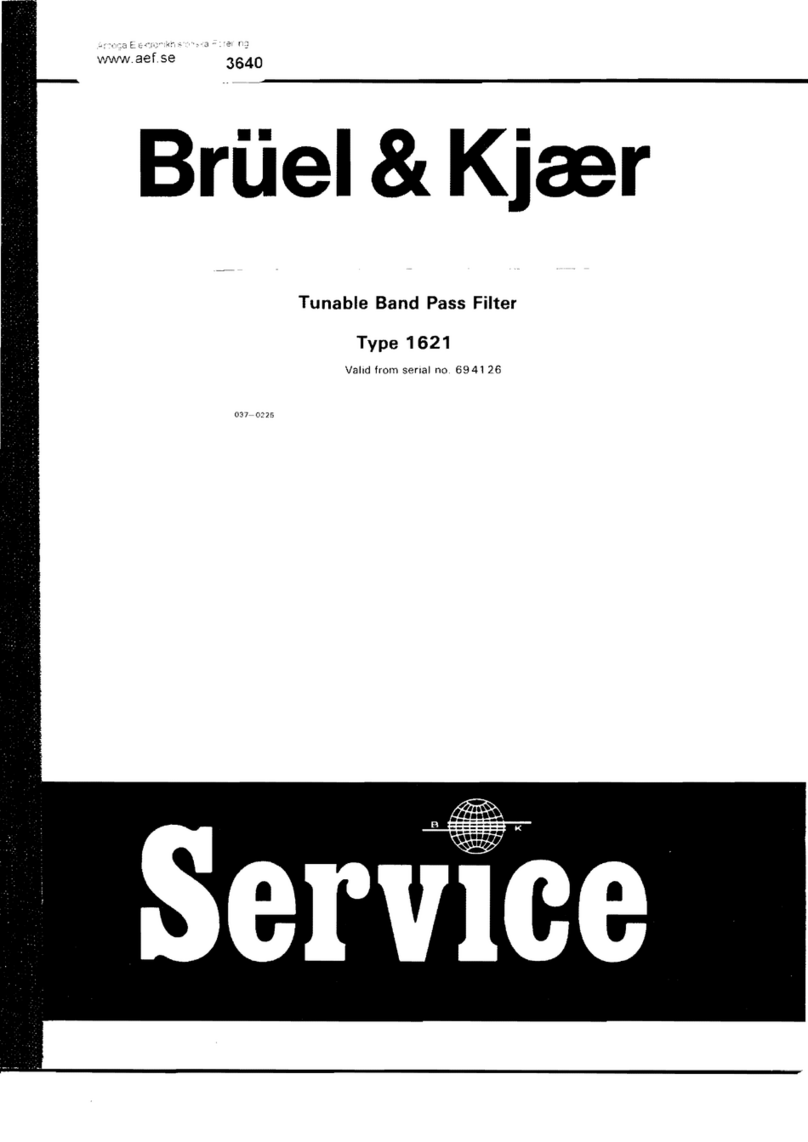
CONTENTS
1.
INTRODUCTION
AND
SPECIFICATIONS
(PRODUCT
DATA)
.................................................
1
2.
CONTROLS
....
........
..
.. .... ........
......
..
..
......
.
..
.....
..
....
........
..
........
.. ..
.. .... ....
....
....
........
..
..
..
..
........ 7
2.1.
FRONT PANEL
.......
.......
..
..
..
....
........
....................................
......
..............
7
2.2
. REAR PANEL
..
..............
..
..
.........
.
..
..........
........
......
............
....
..
........
..
......
10
3.
PRELIMINARY
....................................................................................................................
;
12
3.1. MOUNTING
......................
.
........
.
.............................................................
12
3.2
. POWER SUPPLY
......
....
............................................................................
13
Rechargeable Cells
(8
& K no. QB
0008)
..
.
..
........
..
................
.. ..
......
..
....
..
.
..
. 13
Dry
Cells
1,5
V
.......
.
......................................
.......
......
..................
.
..........
14
External
DC
Supply
6
to
15 V ......
..
....
..
.
..
.
.. .. ..
....
..
..
..
.
.. .. .. ..
.........
..
.
..
...
..
...... 14
Power
Supply
Type
2808
..................
..
...
..
.
.. .. .. .. ..
.....
..
........... .. .... ............. 15
3.3.
CHARGING THE INTERNAL BATIERY FROM
THE
AC
MAINS
........................
15
3.4.
FUSE REPLACEMENT
..............................................................................
16
4.
OPERATION
....................................................................
.
...................................................
17
4.1. USING THE
1623
FILTER
...............................................................
.
.........
17
4.2.
SUITABLE TUNING SIGNALS
....................................................................
17
Photoelectric
Probe MM 001-2 ..............
..
.. .......
..
... .
..
.
..
.......
..
.
..
..... ...
.. .. ..
.... 18
Magnetic
Pickup
MM
0002
..
..
............... .
.. .. ..
....
..
... ...
..
.............
..
...............
18
4.3. SETIING THE TRIGGER LEVEL
.........
..
...............................................
.
..
.....
19
4.4.
MANUALLY
TUNING
THE
FILTER ....
.. ..
.......
.. .. .. .. ..
...
..
... .... .... ......... ..
..
.....
..
.
19
4.5.
SYNCHRONISATION WITH RECORDERS
....................................................
20
Synchronisation
with
the
'Portable Level Recorders Types
2306
and
2309
....
20
Synchronisation
with
an X-Y Recorder
......
..
................................
.....
..
........
22
4.6
. USING
THE
TRACKING FREQUENCY MULTIPLIER
....................................
.
..
23
4.7. USING THE SPECIAL NOISE FILTER ....
......................................................
23
4.8.
FILTER SWEEP RATE LIMITATIONS
...........................................................
24
4.9
. TUNING FROM THE FILTERED OUTPUT SIGNAL
.........................................
25































